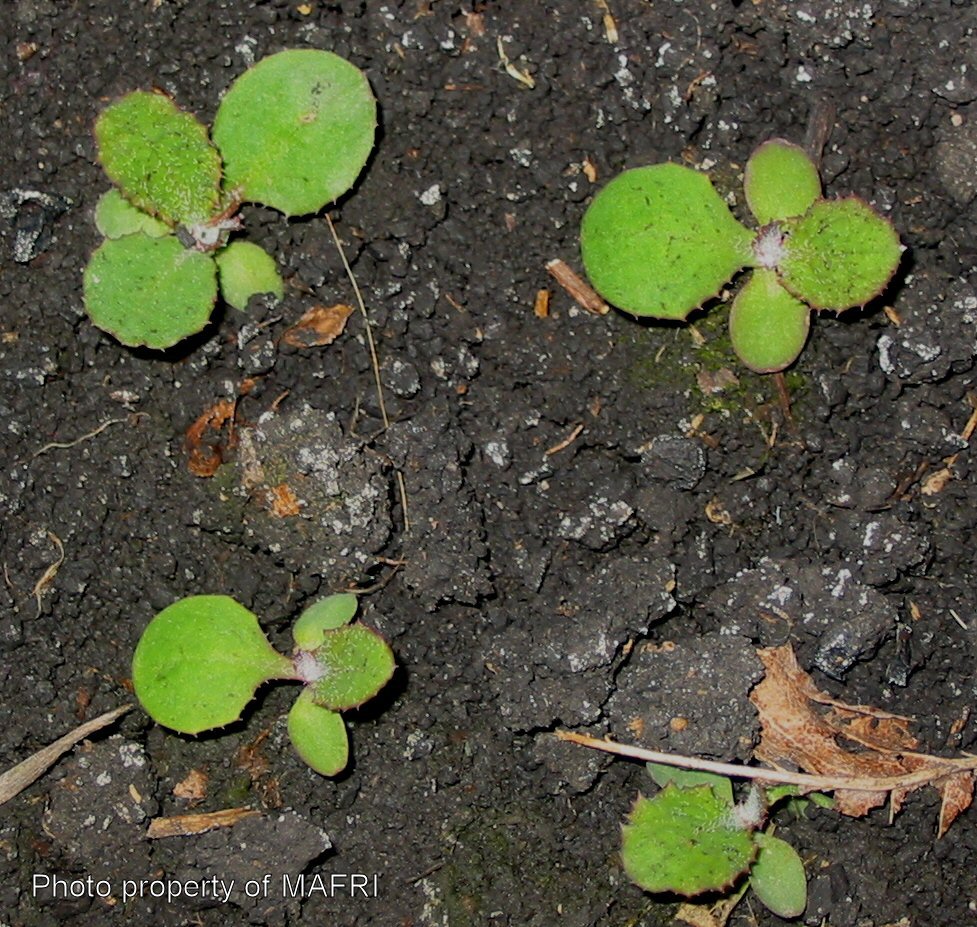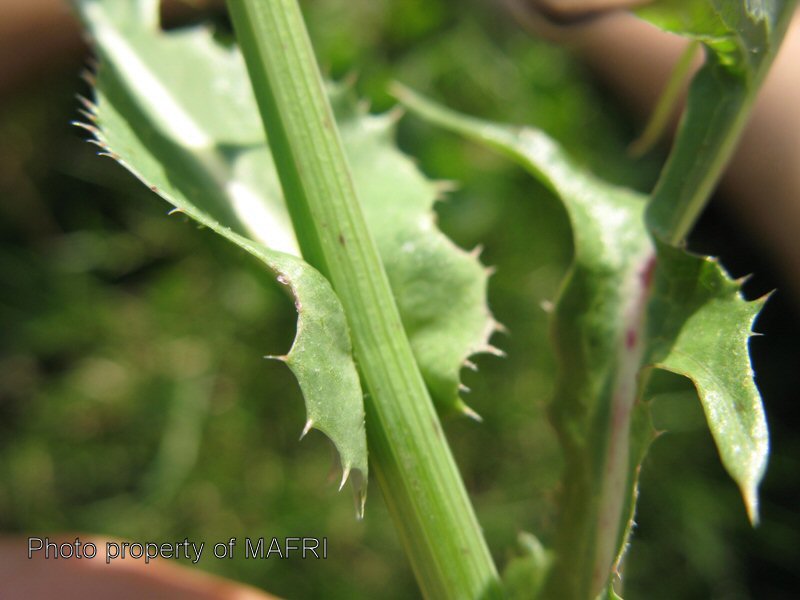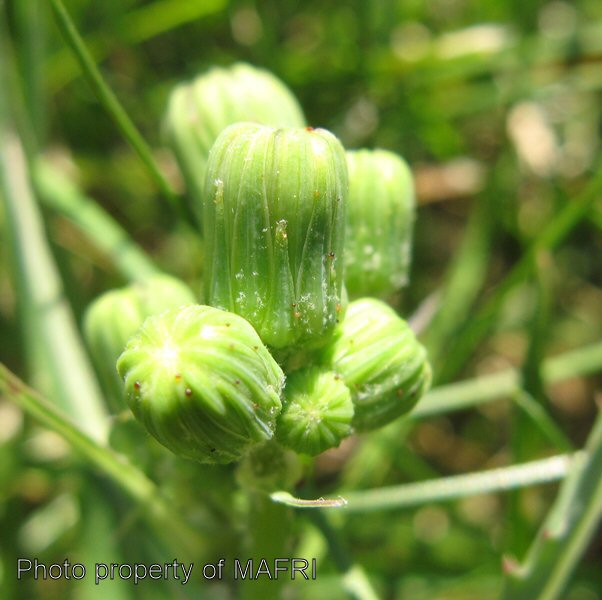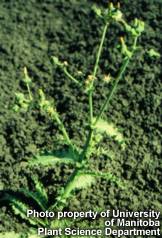Annual Sowthistle
 click to enlarge |
 |
 |
 |
 |
Biology
This is an annual weed, reproducing by seeds. The stems are erect, 1-4 ft. high, hollow, and glabrous. The leaves are alternate with spiny and deeply lobed margins. Lower leaves are petiolate while the upper leaves are sessile. Leaf veins may be purple. Flower heads are numerous, yellow, and appear in corymbs. The seeds are flat achenes, approximately 3 mm long, ribbed lengthwise, brown, with a pappus of white hair at one end. This weed germinates anytime between spring and fall when conditions are suitable.
Annual sow-thistle thrives where moisture is available, especially disturbed areas resulting from overgrazing, natural processes or cultivation. This weed may compete with other desirable plant species. The seeds are easily disseminated by the wind due to the pappus of white hair at one end.
The overwinter rosette phase may also serve as a reservoir for both vectors and viruses. This weed may also act as an alternate summer host to economically important aphids which are potential vectors of "yellow" virus disease.
Many distinguishing characteristics exist when determining annual sow-thistle from perennial. Although hard to compare when the two are not aligned, these characteristics may help distinguish one from the other. Annual sow-thistle reproduces only by seed and has deeper lobed leaves. Perennial sow-thistle has a larger hairy flower head and is more spiny. In particular perennial sow-thistle has a long vertical rhizome-like root system whereas annual sow-thistle has a short taproot.
Scouting Techniques
Take a minimum of 20 weed counts across the field. Frequently scout low lying areas for patches of this weed.
Effects On Crop Quality
This weed can indirectly affect the development of field crops because it hosts nematodes, aphids, and viruses.
Control Tips
- regular cultivation stimulates germination, reducing seed bank size
- tillage during emergence phase
- pre and post-emergence herbicide applications
- Group 4
- Group 9 & 10 in herbicide tolerant crops
